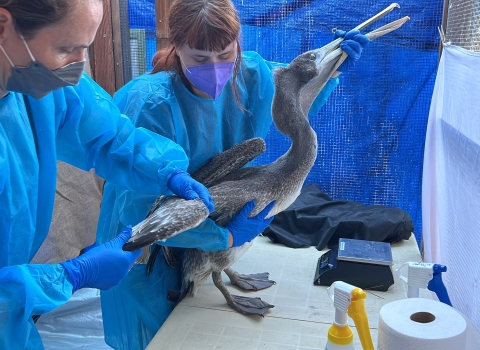DENVER – The 10th Circuit Court of Appeals issued a mandate yesterday, which reinstates Endangered Species Act (ESA) regulation of the threatened Utah prairie dog on non-federal lands. The decision overturns a 2014 U.S. District Court for the District of Utah decision that removed federal ESA protection for the species on non-federal lands and transferred management to the State of Utah. The species is now regulated under the ESA across all land ownerships.
“Our focus now,” said Larry Crist, Field Supervisor for the U.S. Fish and Wildlife Service’s Utah Ecological Services Field Office, “is to work cooperatively with our partners at the Utah Division of Wildlife Resources, local counties, and landowners to continue conservation of the Utah prairie dog in a flexible and collaborative manner.”
Kevin Bunnell, Southern Region Supervisor for the Utah Division of Wildlife Resources, stated, “We are working collaboratively with the U.S. Fish and Wildlife Service to carry forward many of the successful principles in the State’s management plan as we transition to federal management. We will also continue working closely with the Service to conserve and manage Utah prairie dog populations, while striving to minimize their impacts on residents and business owners.”
“We believe that the Endangered Species Act process works best when we build strong partnerships between the U.S. Fish & Wildlife Service, states, and local communities, rather than through litigation and court mandates,” said Greg Sheehan, Principle Deputy Director of the U.S. Fish & Wildlife Service. “We appreciate the state’s management planning efforts for the species and hope to use many of those approaches as a conservation model moving forward."
One of the management tools reinstated upon issuance of the mandate is the 1998 Habitat Conservation Plan (HCP) for Iron County, which was designed to authorize take of Utah prairie dogs in some circumstances. The majority of requests for incidental take of Utah prairie dogs are from Iron County.
In addition to the 1998 HCP, the Service is also reinstating a 4(d) rule, which is a range-wide tool to help reduce conflicts for private landowners. The 4(d) rule authorizes lethal take of Utah prairie dogs where they cause conflicts with agricultural uses or human health and safety.
The Service is also working with the State of Utah, counties, and other partners to prepare a General Conservation Plan (GCP) that integrates the State’s management plan, meets the ESA legal framework, and provides a streamlined process for developers or landowners to obtain take permits for development projects. While the GCP is designed to meet near-term needs, the overall long-term goal is to replace the GCP with a locally-driven conservation strategy for the Utah prairie dog.
The Utah prairie dog was listed as endangered in 1973 and down-listed to threatened in 1984. Utah prairie dogs occur in Iron, Beaver, Garfield, Kane, Piute, Sevier, and Wayne Counties in central and southwestern Utah. Recent Utah prairie dog population trends are stable to increasing, but the species remains vulnerable to habitat loss and plague.
The mission of the U.S. Fish and Wildlife Service is working with others to conserve, protect, and enhance fish, wildlife, plants, and their habitats for the continuing benefit of the American people. We are both a leader and trusted partner in fish and wildlife conservation, known for our scientific excellence, stewardship of lands and natural resources, dedicated professionals, and commitment to public service.
Connect with our Facebook page at http://www.facebook.com/USFWSMountainPrairie, follow our tweets at http://twitter.com/USFWSMtnPrairie, watch our YouTube Channel at http://www.youtube.com/usfws and download photos from our Flickr page at http://www.flickr.com/photos/usfwsmtnprairie/.


